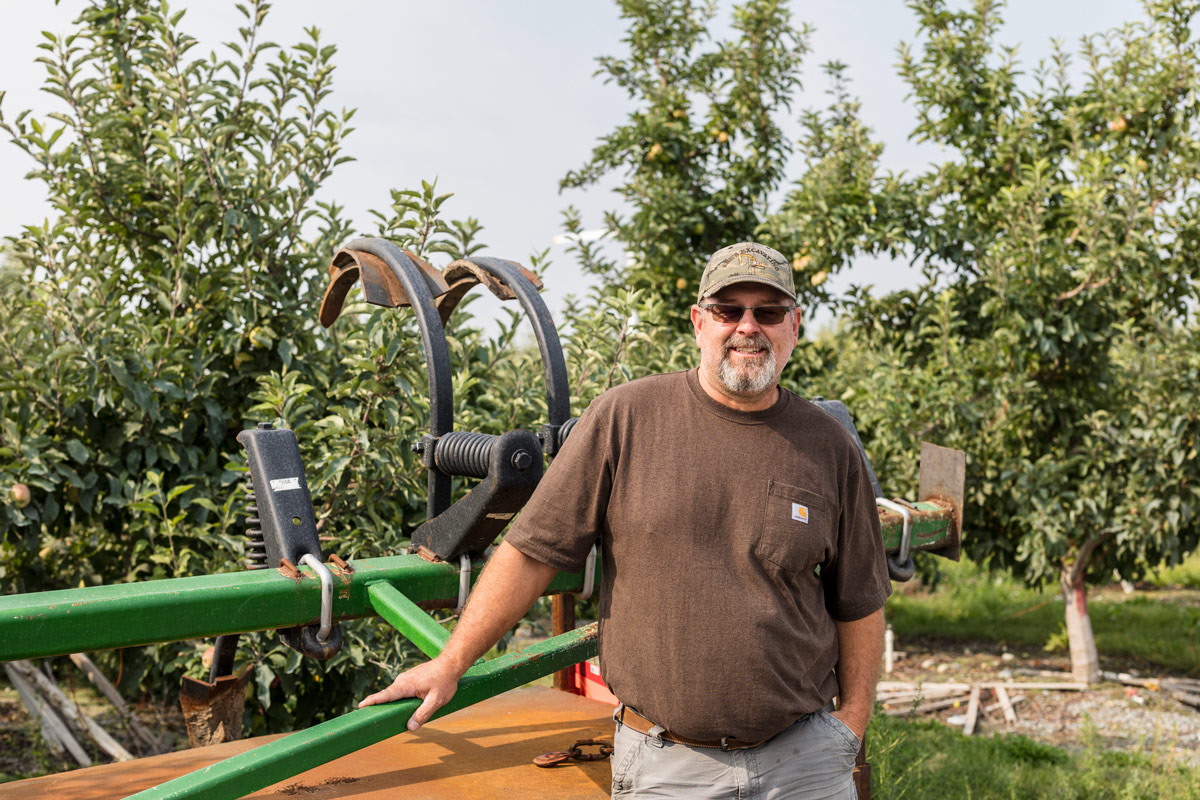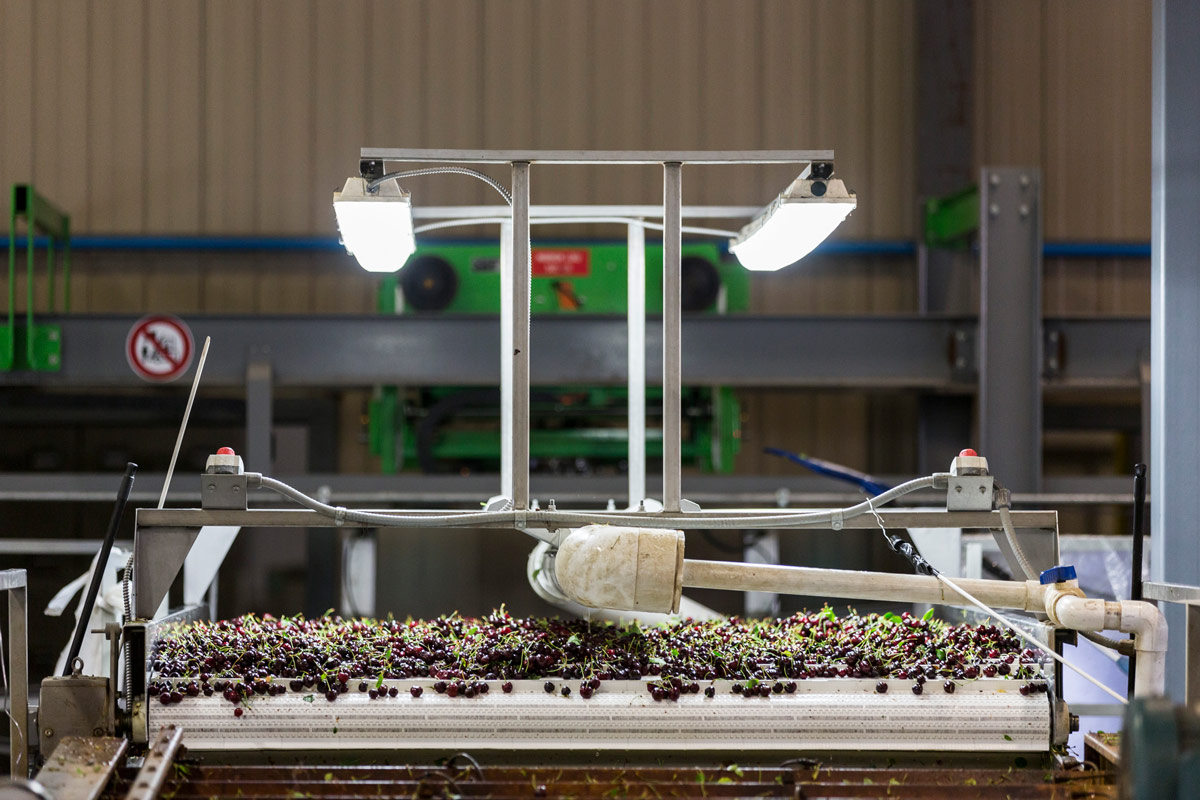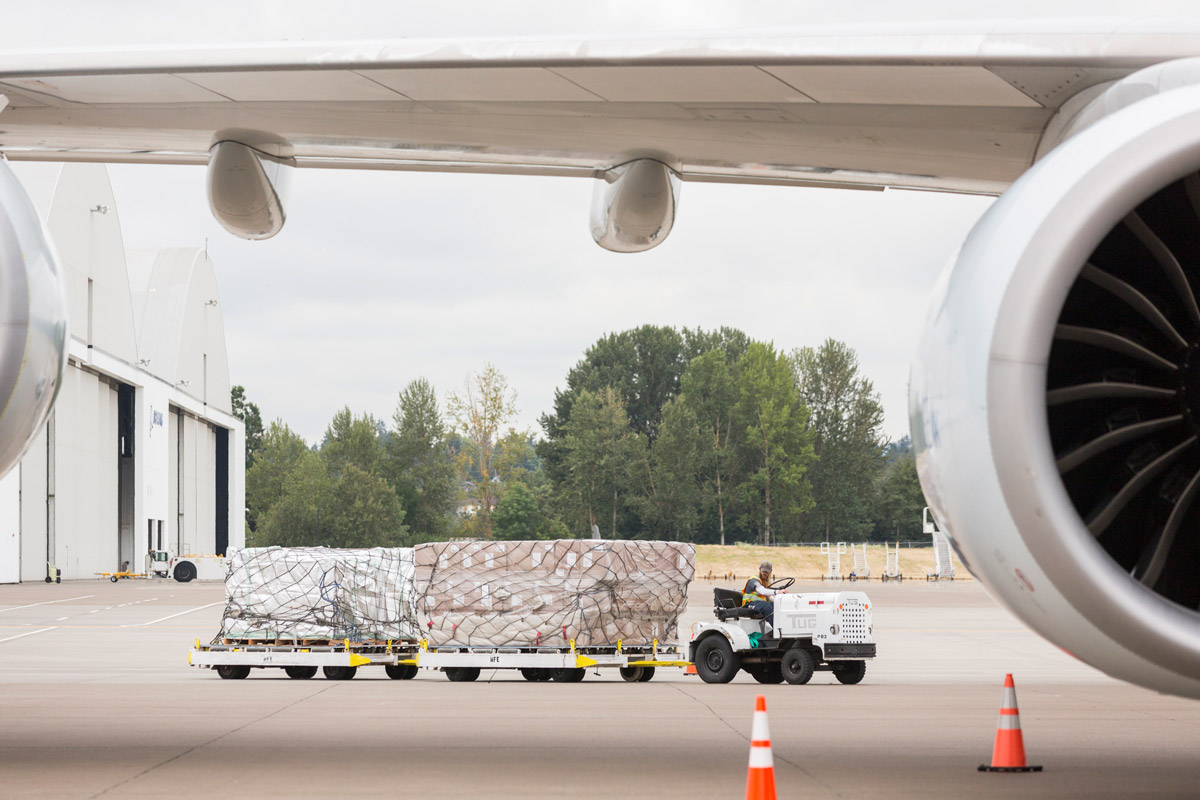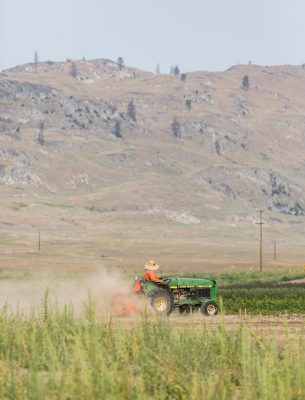Music: www.bensound.com
The Gebbers family has been farming the land around the confluence of the Okanogan and Columbia Rivers in Washington state in the US for more than 100 years. They have farms and facilities up to the Canadian border, some 6,000 hectares in all, most producing apples, but 1,100 are given over to cherries.
At first glance, the land does not look promising – rocky outcrops, steep slopes plunging into river valleys. It’s genuine cowboy country, and indeed used to be. But the damming of the rivers (the Okanogan and Columbia) for hydropower created lakes that provide additional water needed for the apple and cherry orchards.
Lead Orchard Manager Kevin Benson says: ‘We’re in a desert area, it’s very arid and cherries take a lot of water. We take it from wells and pumps we have permits for from the rivers.’
Pacific Northwest cherries are a favourite, seasonal treat, with the dark, sweet fruits available in shops in the US and Asia, which is the biggest export market, from June to August. They are a pricey premium treat. But spend a day on a cherry farm, see the painstaking work, the labour, technology (old and new – see box) and challenges, and it’s hard not regard them as a bargain.
We are up in the hills above the small city of Chelan towards the end of the season. The harvest ‘is 99 per cent done’ according to Gebbers Farm Vice-President Mac Gebbers, who stops by. Today and as with the harvest period there are 2,400 pickers working in crews of 20 people, handpicking the fruit. Today, around 500,000 kilos of cherries will be picked and packed, and the cold chain concerns start in the orchard.
Benson says: ‘The best time to eat these cherries is at 6am straight off the tree – they’re cold, crisp and crunchy.’ And that’s not just epicurean opinion, it’s a guiding principle to getting this fruit to market in the best possible condition, whether that’s domestic or export.
With afternoon temperatures potentially in the forties, time is of the essence. The same heat that ripens the fruit beneath their leafy canopy and gives them their sweetness and dark red colour, affects the quality of picked fruit by softening it.
It means the pickers start at 5am and stop by noon, or as soon as the night time cool dissipates and the ambient temperature hits 25 degrees. Temperature is a guiding principle and keeping the fruit’s core temperature below 24 degrees before it can sit under the hydro cooler at the processing plant is essential. Depending on the location of the orchard that means getting fruit from tree to processing in an hour or so – less, ideally.

Once in the processing plant, the cherries enter the cold chain proper. The Chelan Fresh facility is a cooperative venture for local farms in which the Gebbers have the major stake.
Once in the system, the cherries are never more than seconds away from chilled water in holding tanks or flumes. The bigger of the two production lines can process 18 tonnes an hour at peak times. While the lines still require large numbers of workers for packing, the secret to their speed is a sophisticated camera that the cherries pass beneath. The camera box individually photographs every cherry to assess its grade, colour size and to reject those with flaws.
Cherries are rinsed, and then corralled on to a belt, with each sitting in a tiny cup as it passes through this screening process. Michael Taylor, a member of the Gebber clan, looks after the technology. ‘We build the algorithms and from them the system decides which of the 28 packing lines each cherry will go to.’
That is governed by orders from customers and the grade and colour. As the cherries exit the screening, little puffs of compressed air direct them to the flume for the appropriate packing line, or back to be rescreened if the camera view was obstructed by a wayward stem. The system is so sensitive that it can distinguish the shape of breeds of cherry.

Colour is a key guide. The darker fruit is more likely to be exported by air or to the domestic market as it needs to be on the shelf more quickly. Taylor says: ‘Four or five years ago, this was impossible, because people couldn’t colour-sort accurately because of the volume of fruit going through. The darker cherries need to be in the market and sold within seven days. The lighter colours can last longer and are suitable for two to three weeks in a shipping container as there is more room for ripening.’
The cherries are packed in punnets, then boxed and taken to cold storage. For those heading out to the East by air, forwarders collect the cherries and take them to their own warehouse. There, they build up shipments to fit in the lower deck hold, and each skid is wrapped in thermo-protective sheets in preparation for delivery to the airport and kept in cold storage. Pilot Freight Services Franchise Owner Patrick Allen says: ‘The aim is to get cherries there as late as possible but as soon as required.’
Cherries picked on a day with a Cathay Pacific freighter flight departing from Portland can be ready for retail distribution in Hong Kong or beyond in 20 hours. The regular three-times weekly service doubled this year for the cherry harvest.
Dan Reisenauer, Quality Assurance Manager for Chelan Fresh says: ‘Consumers look at cherries and wonder why they are so expensive. You see the whole process and wonder why they’re so cheap.’

The cherry air force
As well as the Gebbers’ investment in people and processing infrastructure technology, there are other specific bits of kit that are long term investments to give incremental improvements in cherry yield.
The most surprising of these are parked on a rocky plateau above Chelan – a fleet of vintage helicopters. It’s a venerable fleet of 11 Sikorsky S58s, originally designed as a troop carrier when first built back in the 1950s. There are also a couple of Hueys, the small agile helicopters that featured prominently in the Vietnam War. One is indeed an ex-gunship that served in the conflict, while the other saw service with NASA guarding the space shuttle.
Rick Brack leads a team of 18 pilots and three mechanics to keep the fleet ever ready for call out to deal with one of the enemies of the cherry – rain. While the crop needs water, and plenty of it, when the fruit is maturing excess rain on the trees can split the fruit.
Brack says: ‘We go up after it’s rained, and how we fly depends on how wet the trees are and the maturity of the fruit.’
A usual sortie involves flying the aircraft 30 or 40 feet above the trees ‘at five to six knots – that’s a brisk walking pace’. The downdraft clears the water from the trees. It’s not a job for the faint hearted. This is mountainous terrain and winds in frontal systems can be hazardous. Brack says: ‘These machines perform really well in the wind and as they’re not loaded with people or cargo they have the power to get out of most situations.’
How often they are used depends on the weather. This season, they have only flown for five hours, but in other years they can be out for days at any time between sunrise to sundown. It does, though, seem excessive. Brack says: ‘We are the extreme, not every farm dries, but we’ve got the split rate down from 17 per cent to nine per cent, and that makes a huge difference to yield.’
And as Lead Orchard Manager Kevin Benson says: ‘Everything has to be as perfect as possible to get the best possible crop.’











